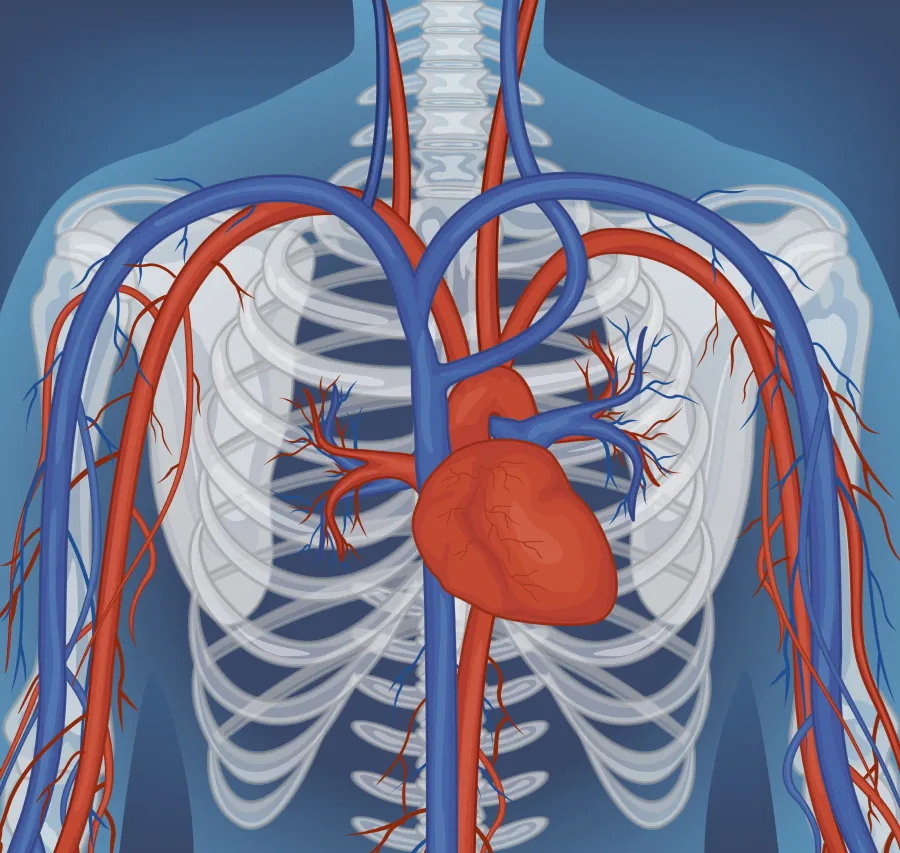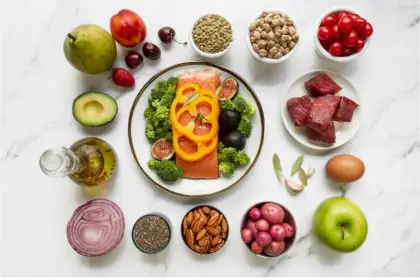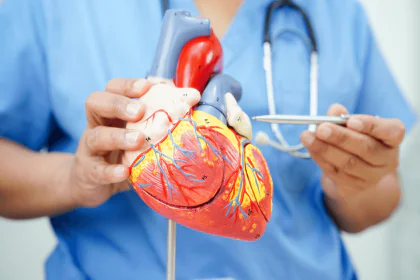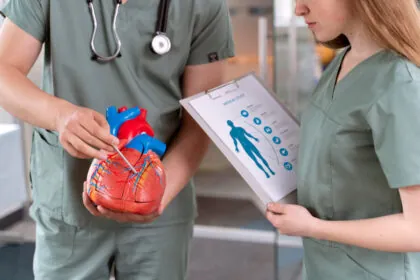The circulatory system, also known as the cardiovascular system, is composed of the heart and the blood vessels that carry blood throughout the body.
The circulatory system is vital for delivering oxygen, nutrients, hormones, and immune cells to the organs and tissues, and for removing waste products and carbon dioxide.
The circulatory system also helps regulate body temperature, blood pressure, and fluid balance.
However, the circulatory system can be affected by various diseases and disorders that can impair its function and cause serious complications.
Some of the common circulatory system diseases are:
- High blood pressure
- Atherosclerosis and coronary artery disease
- Heart attack
- Heart failure
- Stroke
- Aneurysm
- Peripheral artery disease
- Varicose veins
- Deep vein thrombosis
In this blog post, we will explore the symptoms, risks, and natural remedies for each of these circulatory system diseases.
We will also share some tips on how to prevent and manage these conditions and improve your circulatory system health.
1.High Blood Pressure
High blood pressure, or hypertension, is a condition where the force of the blood against the walls of the arteries is too high and part of the circulatory system.
This can damage the arteries and increase the risk of heart disease, stroke, kidney disease, and other problems.
High blood pressure often has no symptoms, but it can be detected by measuring the blood pressure with a device called a sphygmomanometer.
A normal blood pressure is below 120/80 mmHg, while a high blood pressure is above 140/90 mmHg.
Some of the factors that can contribute to high blood pressure are:
- Age
- Family history
- Obesity
- Smoking
- Alcohol consumption
- Stress
- Lack of physical activity
- Salt intake
- Specific drugs and health issues
Some of the natural remedies for Lower high blood pressure are:
Garlic:
Garlic is a herb that has been shown to have blood pressure-lowering effects, as it can relax the blood vessels and inhibit the enzyme that produces angiotensin II.
Garlic can be eaten raw, cooked, or in supplement form. However, garlic can also interact with some medications, such as blood thinners, so consult your doctor before using it.
Omega-3 fatty acids:
Omega-3 fatty acids can reduce inflammation, prevent blood clots, and widen the blood vessels.
It can be found in oily fish, such as salmon, tuna, and sardines, as well as in flaxseeds, walnuts, and supplements.
However, omega-3 fatty acids can also increase the risk of bleeding and interact with some medications, such as blood thinners, so consult your doctor before using them.
2. Atherosclerosis and coronary artery disease
Atherosclerosis is a condition where plaque, a substance made of cholesterol, fat, calcium, and other substances, builds up on the inner walls of the arteries, making them narrow and hard and part of the circulatory system.
This can reduce the blood flow and oxygen supply to the organs and tissues, and cause damage to the artery walls.
Coronary artery disease is a type of atherosclerosis that affects the arteries that supply blood to the heart muscle.
This can lead to chest pain, shortness of breath, irregular heartbeat, and heart attack.
Some of the factors that can contribute to atherosclerosis and coronary artery disease are:
- High blood pressure
- High cholesterol
- Smoking
- Diabetes
- Obesity
- Physical inactivity
- Family history
- Age
- Gender (men are more likely than women to develop coronary artery disease)
Some natural remedies that can help prevent atherosclerosis and coronary artery disease are:
Turmeric is a spice that has been used as a traditional remedy for various conditions, including atherosclerosis and coronary artery disease.
Turmeric contains a compound called curcumin, which has anti-inflammatory, antioxidant, and anti-atherosclerotic effects, meaning it can reduce inflammation, scavenge free radicals, and prevent plaque formation and progression.
Turmeric can be added to food, taken as a supplement, or applied as a paste. However, turmeric can also lower blood sugar levels and interact with some medications, such as blood thinners, so consult your doctor before using it.
Pomegranate:
Pomegranate is a fruit that has been shown to have beneficial effects on atherosclerosis and coronary artery disease, as it can lower blood pressure, cholesterol, and oxidative stress, and improve endothelial function, which is the ability of the blood vessels to dilate and contract.
Pomegranate can be consumed as a juice, a fruit, or a supplement.
However, pomegranate can also interact with some medications, such as blood pressure drugs, so consult your doctor before using it.
3. Heart attack
A heart attack, also known as a myocardial infarction, is a life-threatening condition that occurs when the blood flow to a part of the heart muscle is blocked, and part of the circulatory system usually by a blood clot.
This can cause the heart muscle to die or become damaged, and affect the heart’s ability to pump blood.
A heart attack requires immediate medical attention, as it can lead to cardiac arrest, which is when the heart stops beating, or heart failure, which is when the heart cannot pump enough blood to meet the body’s needs.
Some of the factors that can increase the risk of a heart attack for your circulatory system are:
- Atherosclerosis and coronary artery disease
- High blood pressure
- High cholesterol
- Smoking
- Diabetes
- Obesity
- Physical inactivity
- Stress
- Family history
- Age
- Gender (men are more likely than women to have a heart attack)
Some of the symptoms of a heart attack are:
- Chest pain or discomfort, such as pressure, squeezing, or fullness, that lasts for more than a few minutes or comes and goes
- Pain or discomfort in other parts of the body, such as the jaw, neck, shoulders, arms, or back
- Shortness of breath, with or without chest pain
- Sweating, nausea, vomiting, or indigestion
- Lightheadedness, dizziness, or fainting
- Anxiety, fear, or a sense of impending doom
Natural remedies that can help prevent and recover from a heart attack are:
Hawthorn:
Hawthorn is a plant that has been used as a traditional remedy for heart problems, including heart attack and help your circulatory system.
Hawthorn contains flavonoids, which are antioxidants that can improve blood flow, lower blood pressure, and strengthen the heart muscle.
Hawthorn can be consumed as a tea, a tincture, or a supplement.
However, hawthorn can also interact with some medications, such as blood pressure drugs, so consult your doctor before using it.
Coenzyme Q10:
Coenzyme Q10, or CoQ10, is a substance that is naturally produced by the body and is involved in energy production and antioxidant defense.
CoQ10 levels tend to decline with age and in people with heart disease.
CoQ10 supplementation may help prevent and treat heart attack, as it can improve heart function, lower blood pressure, and prevent oxidative damage.
CoQ10 can be taken as a supplement, or found in foods, such as meat, fish, and nuts.
However, CoQ10 can also interact with some medications, such as blood thinners, so consult your doctor before using it.
Magnesium:
Magnesium is a mineral that is essential for many bodily functions, including muscle contraction, nerve transmission, help your circulatory system and blood pressure regulation.
Magnesium deficiency can increase the risk of a heart attack, as it can cause spasms of the coronary arteries, which supply blood to the heart muscle.
Magnesium supplementation may help prevent and treat heart attack, as it can relax the blood vessels, lower blood pressure, and improve heart function.
4. Stroke
A stroke is a medical emergency that occurs when the blood supply to a part of the brain is interrupted, usually by a blood clot or a burst blood vessel and it’s a part of the circulatory system.
This can cause brain cells to die or become damaged, and affect the functions that are controlled by that part of the brain, such as movement, speech, vision, memory, or cognition.
A stroke can be classified into two types, depending on the cause:
- Ischemic stroke, which is caused by a blood clot that blocks an artery in the brain.
- Hemorrhagic stroke, which is caused by a burst blood vessel that bleeds into the brain.
Some of the symptoms of a stroke are:
- Sudden numbness or weakness in the face, arm, or leg, especially on one side of the body
- Sudden confusion, trouble speaking, or understanding speech
- Sudden trouble seeing in one or both eyes
- Sudden trouble walking, dizziness, loss of balance, or coordination
- Sudden severe headache with no known cause
Natural remedies that can help prevent and recover from a stroke are:
Ginkgo biloba:
Ginkgo biloba is a plant that has been used as a traditional remedy for various conditions, including stroke.
It contains flavonoids and terpenoids, which are antioxidants that can protect the brain cells from damage, improve blood flow, and prevent blood clots and prevent damage at your circulatory system.
Its supplementation may help prevent ischemic stroke, and improve the cognitive and functional outcomes of people who have had a stroke.
It can be taken as a supplement, or found in foods, such as tea, nuts, and seeds.
However, ginkgo biloba can also cause some side effects, such as bleeding, headache, or allergic reactions, and interact with some medications, such as blood thinners, so consult your doctor before using it.
Ginseng.
Ginseng is a root that has been used as a traditional remedy for various conditions, including stroke.
It contains ginsenosides, which are compounds that can modulate the activity of the nervous system, the immune system, and the endocrine system.
Ginseng supplementation may help prevent ischemic stroke, and improve the neurological and functional recovery of people who have had a stroke.
It can be taken as a supplement, or found in foods, such as tea, candy, or soup.
However, ginseng can also cause some side effects, such as insomnia, nervousness, or blood pressure changes, help your circulatory system and interact with some medications, such as blood thinners, so consult your doctor before using it.
5. Aneurysm
An aneurysm is a and part of the circulatory system.
It is a bulge or a weak spot in the wall of an artery, which can cause the artery to balloon out and rupture.
This can lead to bleeding and damage to the surrounding tissues and organs.
An aneurysm can occur in any artery in the body, but the most common locations are:
The aorta, which is the main artery that carries blood from the heart to the rest of the body.
An aortic aneurysm can affect the chest (thoracic aortic aneurysm) or the abdomen (abdominal aortic aneurysm).
The brain, which is supplied by the carotid arteries and the cerebral arteries.
A brain aneurysm can cause a stroke or a subarachnoid hemorrhage, which is bleeding into the space between the brain and the skull.
Some of the symptoms of an aneurysm are:
Aortic aneurysm: Often asymptomatic, but may cause chest or back pain, shortness of breath, coughing, or difficulty swallowing.
Brain aneurysm: Often asymptomatic, but may cause headache, blurred vision, eye pain, drooping eyelid, or weakness or numbness on one side of the face or body.
Natural remedies that can help prevent an aneurysm are:
Garlic:
Garlic supplementation may help prevent and treat aneurysm, as it can reduce the risk of rupture and improve the outcomes of surgery.
Garlic can be eaten raw, cooked, or in a supplement form.
However, garlic can also interact with some medications, such as blood thinners, so consult your doctor before using it.
Vitamin C:
Vitamin C supplementation may help prevent and treat aneurysm, as it can enhance the collagen production and repair of the blood vessel walls.
Vitamin C can be taken as a supplement, or found in foods, such as citrus fruits, berries, peppers, and broccoli.
However, vitamin C can also cause some side effects, such as:
- Diarrhea
- Kidney stones
- Iron overload
- Interact with some medications, such as blood thinners, so consult your doctor before using it.
Resveratrol:
Resveratrol is a polyphenol that is found in red wine, grapes, berries, and peanuts.
Resveratrol has anti-inflammatory, antioxidant, and anti-atherosclerotic effects, meaning it can reduce inflammation, scavenge free radicals, and prevent plaque formation and progression.
Resveratrol supplementation may help prevent and treat aneurysm, as it can improve the endothelial function and reduce the oxidative stress and inflammation that can damage the blood vessel walls.
Resveratrol can be taken as a supplement, or found in foods, such as red wine, grapes, berries, and peanuts.
However, resveratrol can also interact with some medications, such as blood thinners, so consult your doctor before using it.
6. Peripheral artery disease
Peripheral artery disease (PAD) is a condition where the arteries that supply blood to the limbs, especially the legs, become narrowed and clogged by plaque.
This can reduce the blood flow and oxygen supply to the muscles and tissues, and cause pain, cramping, numbness, or weakness in the legs, especially when walking or exercising.
PAD can also increase the risk of infection, ulcers, gangrene, and amputation in the affected limbs.
Some of the symptoms of PAD are:
- Pain, cramping, or aching in the legs, especially in the calves, thighs, or buttocks, that worsens with activity and improves with rest. This is called intermittent claudication.
- Numbness, tingling, or coldness in the legs or feet.
- Change in the color or temperature of the legs or feet, such as pale, blue, or red skin.
- Slow healing of wounds or sores on the legs or feet.
- Loss of hair or nails on the legs or feet.
- Weak or absent pulse in the legs or feet.
Natural Remedies:
Ginger:
Ginger supplementation may help improve the blood flow, help your circulatory systemand reduce the pain and cramping in the legs.
Ginger can be added to food, taken as a supplement, or consumed as a tea.
Ginkgo biloba:
Ginkgo biloba supplementation may help improve the walking distance and reduce the pain and cramping in the legs.
Ginkgo biloba can be taken as a supplement, or found in foods, such as tea, nuts, and seeds.
7. Varicose veins
Varicose veins are enlarged, twisted, and swollen veins that appear under the skin, usually on the legs and part of the circulatory system.
They are caused by weak or damaged valves in the veins that allow blood to pool and flow backward.
Varicose veins can cause cosmetic concerns, as well as symptoms such as:
- Pain
- Heaviness
- Itching
- Cramping in the legs.
Varicose veins can also increase the risk of blood clots, skin ulcers, or bleeding.
Some of the factors that can increase the risk of varicose veins are:
- Age
- Gender (women are more likely than men to have varicose veins)
- Pregnancy
- Obesity
- Standing or sitting for long periods
- Family history
- Hormonal changes, such as menopause or birth control pills
Some of the symptoms of varicose veins are:
- Blue, purple, or red veins that are visible under the skin, often in a twisted or bulging pattern.
- Pain, heaviness, or aching in the legs, especially after standing or sitting for long periods.
- Itching, burning, or throbbing in the legs or around the veins.
- Swelling, cramping, or restless legs syndrome in the legs or ankles.
- Skin changes, such as dryness, scaling, or discoloration, near the veins.
- Bleeding, infection, or ulceration of the skin over the veins.
Some of the Natural Remedies To Help Your Circulatory System:
Horse chestnut:
Horse chestnut is a plant that has been used as a traditional remedy for varicose veins.
Horse chestnut contains aescin, which is a compound that has anti-inflammatory, anti-edema, and venotonic effects, meaning it can reduce inflammation, swelling, and leakage of fluid from the veins, and improve the tone and elasticity of the vein walls.
Horse chestnut supplementation may help reduce the symptoms and appearance of varicose veins. Horse chestnut can be taken as a supplement, or applied as a cream or gel.
However, horse chestnuts can also cause some side effects, such as nausea, headache, or bleeding, and interact with some medications, such as blood thinners, so consult your doctor before using them.
Grape seed extract:
Grape seed extract is a substance that is derived from the seeds of grapes.
Grape seed extract contains proanthocyanidins, which are antioxidants that can protect the blood vessels from damage, improve blood flow, help your circulatory system and prevent blood clots.
Its supplementation may help prevent and treat varicose veins, as it can reduce the swelling, pain, and discoloration of the veins.
It can be taken as a supplement, or found in foods, such as grapes, berries, and peanuts.
However, grape seed extract can also interact with some medications, such as blood thinners, so consult your doctor before using it.
Butcher’s broom:
Butcher’s broom is a plant that has been used as a traditional remedy for varicose veins. Butcher’s broom contains ruscogenins.
It’s supplementation may help improve the blood circulation and reduce the symptoms of varicose veins.
It can be taken as a supplement, or consumed as a tea.
However, butcher’s broom can also cause some side effects, such as:
- Stomach upset
- Nausea
- Diarrhea, and interact with some medications, such as blood pressure drugs.
So consult your doctor before using it.
8. Deep Vein Thrombosis
Deep vein thrombosis (DVT) is a condition where a blood clot forms in a deep vein, usually in the legs and it’s a part of the circulatory system.
This can block the blood flow and cause swelling, pain, and redness in the affected area.
DVT can also lead to a serious complication called pulmonary embolism, which is when a part of the blood clot breaks off and travels to the lungs, causing chest pain, shortness of breath, coughing, or even death.
Some of the factors that can increase the risk of DVT are:
- Prolonged immobility, such as bed rest, surgery, or travel
- Injury or trauma to the veins, such as fractures, bruises, or injections
- Pregnancy or childbirth
- Hormonal changes, such as birth control pills, hormone replacement therapy, or menopause
- Cancer or cancer treatment
- Inherited blood clotting disorders
- Obesity
- Smoking
- Age
- Family history
Some of the symptoms of DVT are:
- Swelling, pain, or tenderness in the leg, usually in the calf or thigh
- Warmth, redness, or discoloration of the skin over the vein
- Fever, chills, or sweating
- Difficulty breathing, chest pain, or coughing blood (if pulmonary embolism occurs)
Some of the natural remedies To Help Your Circulatory System are:
Bromelain:
Bromelain is an enzyme that is found in pineapple and its stem.
Bromelain has anti-inflammatory, anti-edema, and fibrinolytic effects, meaning it can reduce inflammation, swelling, and dissolve blood clots.
Bromelain supplementation may help prevent and treat DVT, as it can improve the blood circulation, help your circulatory system and reduce the risk of complications, such as pulmonary embolism.
It can be taken as a supplement, or found in foods, such as pineapple, juice, or jam.
However, bromelain can also cause some side effects, such as allergic reactions, stomach upset, or bleeding, and interact with some medications, such as blood thinners, so consult your doctor before using it.
Conclusion
In this blog post, we have explored the symptoms, risks, and natural remedies for each of these circulatory system diseases.
We have also shared some tips on how to prevent and manage these conditions and improve your circulatory system health.
However, please note that these natural remedies are not a substitute for medical treatment and advice, and you should always consult your doctor before using them.
FAQs
What are the common symptoms of circulatory system diseases?
Common symptoms of circulatory system diseases include chest pain, shortness of breath, fatigue, dizziness, and swelling in the extremities.
It’s crucial to be aware of these signs and seek medical attention if you experience them.
What are the risk factors associated with circulatory system diseases?
Several risk factors contribute to circulatory system diseases, including smoking, high blood pressure, diabetes, obesity, a sedentary lifestyle, and a family history of cardiovascular issues. Understanding and addressing these risk factors can help prevent the onset of circulatory diseases.
How can one maintain a healthy circulatory system?
Maintaining a healthy lifestyle is key to promoting a robust circulatory system.
This includes regular exercise, a balanced diet rich in fruits and vegetables, avoiding smoking and excessive alcohol consumption, managing stress levels, and getting regular check-ups to monitor blood pressure and cholesterol.
What are the treatment options for circulatory system diseases?
Treatment options for circulatory system diseases vary depending on the specific condition but may include lifestyle changes, medications, surgical interventions, and rehabilitation.
It’s crucial to consult with a healthcare professional to determine the most appropriate treatment plan based on the individual’s health status and the severity of the disease.





